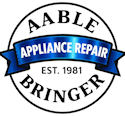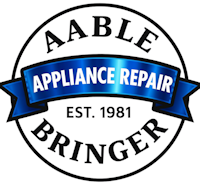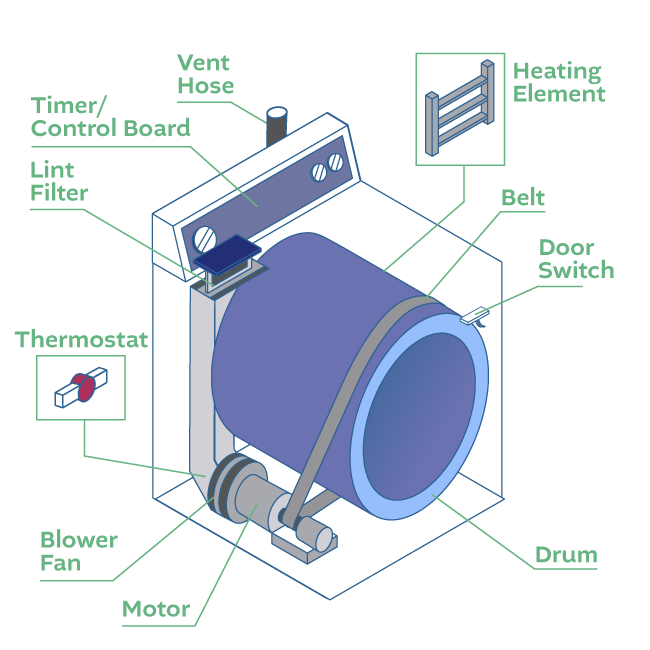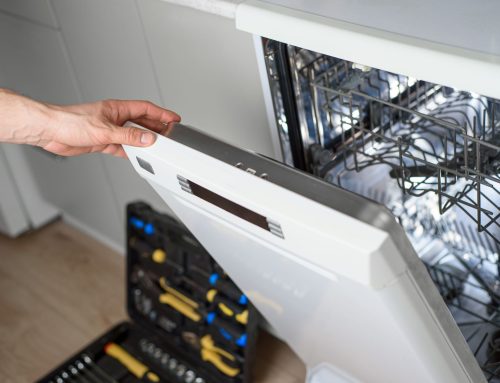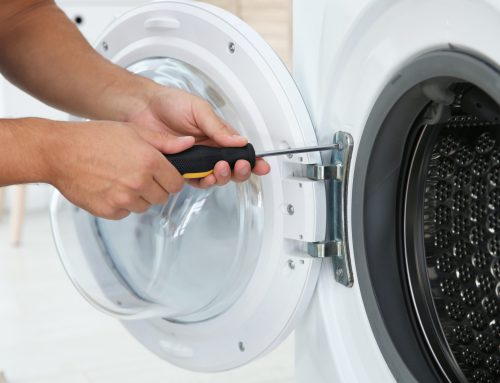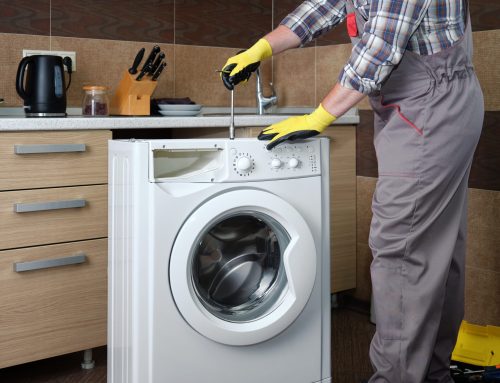When your dryer starts acting up, it can disrupt your entire laundry routine and leave you with damp clothes and frustration.
To keep your dryer running efficiently and avoid inconvenient breakdowns, it’s essential to understand the common issues and know when to involve professional dryer repair in Louisville, KY.
This comprehensive guide will help you troubleshoot and address dryer problems with confidence, ensuring your laundry gets back on track quickly and smoothly. Don’t let dryer issues hold you back – mastering dryer repair is easier than you think!
Essential Components of a Dryer and Their Functions
Getting familiar with your dryer’s main components can help troubleshoot and repair common issues. Here’s a brief breakdown of the essential parts that keep your dryer running smoothly:
- Drum: Where your clothes are placed for drying. It rotates to tumble the clothes and ensure even drying.
- Heating Element: Generates heat to dry your clothes. It warms the air that circulates through the drum.
- Thermostat: Regulates the temperature inside the dryer to prevent overheating. It ensures that the dryer operates at the optimal temperature for efficient drying.
- Lint Filter: Captures lint and debris from your clothes. Regular cleaning is essential to maintain airflow and prevent fire hazards.
- Vent Hose: Directs hot and moist air from the dryer to the outside of your home. Proper venting is crucial for efficient drying and to prevent moisture buildup.
- Belt: Connects the motor to the drum, enabling it to spin. If the belt wears out or breaks, the drum may not rotate properly.
- Motor: Powers the drum and blower fan, driving the mechanical components that ensure proper drying and air circulation.
- Blower Fan: Circulates air through the drum and out the vent hose. It helps maintain consistent airflow for effective drying.
- Door Switch: Ensures the dryer only operates when the door is securely closed. If the switch is faulty, the dryer may not start or run properly.
- Timer/Control Board: Manages the drying cycles and settings. It controls the operation of the dryer based on your selected options.
5 Most Common Issues of Dryers
Here are five common dryer problems and how to identify them:
1. Dryer Won’t Start
- Power Supply Issues: If your dryer isn’t starting, it may not be receiving power, even if it’s plugged in. A tripped circuit breaker or a faulty outlet could be the cause.
- Door Switch: A dryer that won’t start might signal a faulty door switch, which isn’t engaging properly. This issue can prevent the dryer from operating.
- Start Switch or Timer: When the start switch or timer malfunctions, the dryer may not start or operate. This could be a sign that these components need professional attention.
2. Dryer Is Not Heating
- Heating Element: If your dryer runs but doesn’t produce heat, it could indicate a faulty heating element that may need professional inspection.
- Thermostat or Thermal Fuse: A dryer that isn’t heating might point to a malfunctioning thermostat or a blown thermal fuse, both of which require expert testing and potential replacement.
- Power Supply: Inadequate heating may be a sign that your dryer isn’t receiving the necessary power supply, possibly due to issues with the power cord or circuit breaker.
3. Dryer Is Overheating
- Ventilation Issues: If your dryer is overheating, it may indicate blocked or clogged vents, restricting airflow and causing the unit to run too hot.
- Thermostat Problems: Overheating could be a sign of a malfunctioning thermostat that’s failing to regulate the dryer’s temperature properly.
- Overloading: Consistent overheating might result from overloading the dryer, which can restrict airflow and strain the machine.
4. Dryer Drum Isn’t Spinning
- Belt Issues: If the drum isn’t spinning, a worn or broken belt might be the problem. Look for visible damage to the belt that could prevent drum movement.
- Drum Roller or Bearing: A non-spinning drum could indicate worn drum rollers or bearings, which may need replacement to restore proper function.
- Motor Problems: Faulty motor issues might be the cause if the drum fails to spin, signaling a need for professional repair or replacement.
5. Clothes Take Too Long to Dry
- Vent Blockages: Extended drying times may indicate a clogged vent restricting airflow. Check and clean the lint filter, vent hose, and external vent.
- Heating Element Issues: Weak or failing heating elements can lead to prolonged drying times. If the element isn’t heating properly, it may need to be replaced.
- Load Size: If your dryer takes too long to dry clothes, it could be due to overloading. Reducing the load size can improve airflow and efficiency.
Maintenance Tips For An Efficiently Working Dryer
Opting for professional dryer repair services offers several key advantages, ensuring your appliance operates at its best:
- Extended Lifespan: On-time repairs can address issues before they affect other parts, isolating the main issue. This effective approach helps extend the life of your dryer, delaying the need for a costly replacement.
- Improved Efficiency and Lower Energy Bills: Keeping your dryer well-maintained makes it run efficiently, drying your clothes effectively without excessive energy consumption. This efficiency leads to lower utility bills and prevents the energy waste associated with poorly performing dryers.
- Enhanced Safety: Professional servicing includes checking and addressing potential safety hazards, such as electrical issues or vent blockages. Proper maintenance reduces the risk of fires and ensures safe operation.
- Consistent Performance: Regular repairs and upkeep ensure that your dryer performs consistently, reducing the likelihood of unexpected breakdowns and ensuring your laundry routine remains uninterrupted.
- Expert Diagnosis and Repair: Skilled technicians can accurately diagnose and fix complex issues that might be difficult to identify on your own. Their expertise ensures that repairs are done correctly, improving the overall performance of your dryer.
Investing in professional dryer repair services helps you maintain an efficient, safe, and reliable appliance, ultimately saving you time, money, and hassle.
Cost of Dryer Repair
Understanding the cost of dryer repairs can help you plan and budget effectively.
Here’s a breakdown of typical expenses you might encounter:
- Service Call Fee: Most technicians charge a service call fee ranging from $75 to $150. This fee covers the technician’s visit to diagnose the issue and provide an initial assessment.
- Average Repair Costs: On average, dryer repairs can cost between $150 and $300, depending on the nature of the problem and the parts required. Simple repairs, like replacing a door switch or thermostat, may fall on the lower end, while more complex repairs, such as fixing the heating element or motor, can be more expensive.
If your dryer requires constant repairs where costs incurred are nearing the price of a new unit, it may be time for a replacement.
Consider replacing your washer if it’s outdated or inefficient. Keep in mind, investing in a new washer could be more cost-effective and ensure greater efficiency and safety in the long run.
Frequently Asked Questions
Avoid Backlog with Professional Dryer Repair Services
Don’t let dryer issues disrupt your daily routine. Our experienced technicians at Bringer Appliance Repair are here to handle everything from diagnosing and repairing common problems to ensuring your dryer runs efficiently and safely.
Regular maintenance and timely dryer repair in Louisville, KY, can extend the life of your appliance, enhance performance, and prevent unexpected breakdowns.
Schedule Your Repair Today! Ensure your dryer operates smoothly and effectively.
